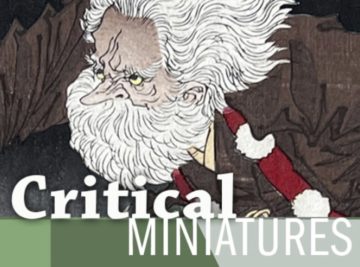Richard Hughes Gibson in The Hedgehog Review:
 What exactly separates the short story from the novel? As the contemporary Scottish writer William Boyd has observed, the issue is more complicated than it might at first appear. Novelists and short story writers, Boyd points out, rely on the same “literary tools,” including character, plot, setting, title, and dialogue, and their outputs—sentences and paragraphs—look the same on the page. The tempting answer is to fall back on the obvious difference: short stories are just shorter than novels.
What exactly separates the short story from the novel? As the contemporary Scottish writer William Boyd has observed, the issue is more complicated than it might at first appear. Novelists and short story writers, Boyd points out, rely on the same “literary tools,” including character, plot, setting, title, and dialogue, and their outputs—sentences and paragraphs—look the same on the page. The tempting answer is to fall back on the obvious difference: short stories are just shorter than novels.
Already in the late nineteenth century, critics argued that that answer wasn’t good enough. In one of the earliest attempts to define the genre, “The Philosophy of the Short-Story” (1885), Brander Matthews made the case that the short story’s distinctive trait is not length per se. (“The story which is short can be written by anybody who can write at all.”) In Matthews’s view, the short story is defined by its originality, ingenuity, and, above all, “vigorous compression.”
More here.
